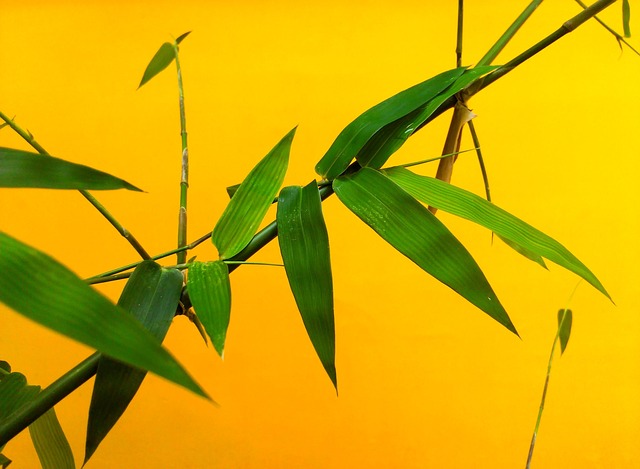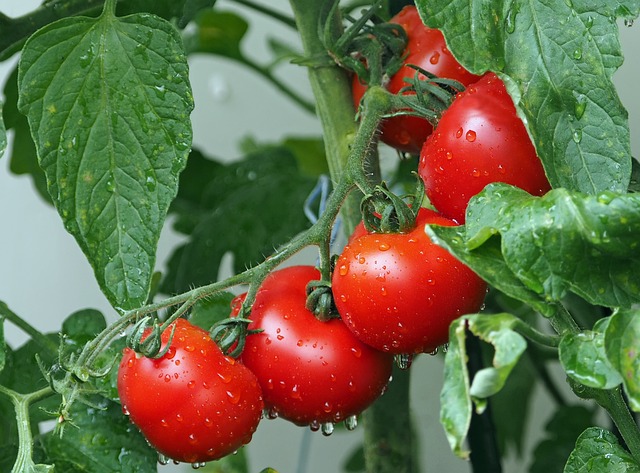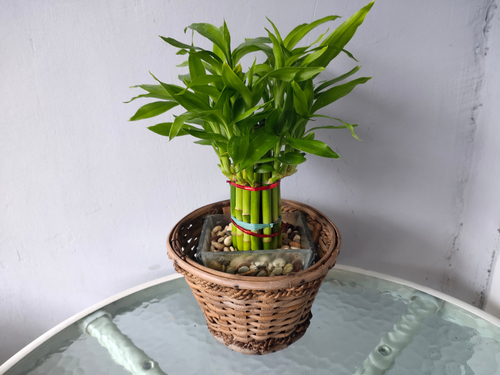Bamboo is a beautiful, fast-growing plant that can add a touch of greenery to any garden or home. However, like any plant, bamboo can be susceptible to various diseases and pests that can affect its health and appearance.
One common issue that bamboo owners may encounter is the appearance of white spots on the plant’s leaves.
White spots on bamboo leaves can be caused by a variety of factors, including fungal infections, pests, and environmental conditions. While these spots may not necessarily be harmful to the plant’s health, they can detract from its appearance and may indicate an underlying problem that needs to be addressed.
In this article, we will explore the common causes of white spots on bamboo leaves, as well as prevention and treatment options to keep your bamboo healthy and vibrant.
Key Takeaways
- White spots on bamboo leaves can be caused by fungal infections, pests, or environmental conditions.
- While white spots may not necessarily harm the plant’s health, they can detract from its appearance and indicate an underlying problem.
- Prevention and treatment options include maintaining proper humidity levels, providing adequate ventilation, and using fungicides or insecticides when necessary.
See these other popular picks in this category:
Recognizing White Spots on Bamboo Leaves

White spots on bamboo leaves can be a sign of a fungal infection or pest infestation. If left untreated, these spots can spread and cause significant damage to the plant. Recognizing the signs and symptoms of white spots on bamboo leaves is crucial to keeping your bamboo plant healthy.
Signs and Symptoms
White spots on bamboo leaves typically appear as circular white spots on the surface of the leaves. These spots may be accompanied by discoloration of the leaves, which can range from yellow to brown. In severe cases, the leaves may start to curl or wilt.
Identification
Identifying the cause of white spots on bamboo leaves requires inspecting the plant and its surroundings. One common cause of white spots is a fungal infection caused by high humidity levels. In this case, the white spots will be accompanied by a powdery substance on the leaves.
Another common cause of white spots is a pest infestation, such as bamboo mites. These mites feed on the bamboo plant’s sap and can cause yellowing and discoloration of the leaves, as well as circular white spots.
Inspecting
Inspecting the bamboo plant and its surroundings can help determine the cause of the white spots. Look for signs of fungal growth on the leaves and surrounding areas, such as mold or mildew. Check for signs of pest infestations, such as webs or mites on the leaves.
To prevent white spots on bamboo leaves, ensure that the plant is properly watered and ventilated. Avoid overwatering the plant, as this can lead to high humidity levels and fungal growth. Additionally, regularly inspect the plant for signs of pests and treat any infestations promptly.
White Spots on Bamboo Leaves – 4 Common Problems
White spots on bamboo leaves are a common issue that can be caused by various factors. In this section, we’ll discuss some of the most common causes of white spots on bamboo leaves.
1. Fungal Infections
One of the primary reasons for white spots on bamboo leaves is fungal infections. Fungi like powdery mildew, downy mildew, and rust can cause white or grayish spots on the leaves. These fungi thrive in warm and humid conditions and can spread quickly. If left untreated, fungal infections can weaken the plant and cause it to die.
2. Pest Infestations

Pests like mealybugs, scale insects, aphids, and whiteflies can also cause white spots on bamboo leaves. These insects feed on the sap of the plant, leaving behind a sticky residue called honeydew.
The honeydew attracts sooty mold, which can cause black spots on the leaves. Spider mites are another common pest that can cause white spots on bamboo leaves.
3. Sunlight and UV Rays
Bamboo plants require a moderate amount of sunlight to thrive. However, direct sunlight or exposure to UV rays can cause stress to the plant, leading to white spots on the leaves. It’s important to provide adequate shade to the plant, especially during the hottest part of the day.
4. Other Causes
Other factors that can cause white spots on bamboo leaves include diseases, nutrient deficiencies, and stress. If the plant is not getting enough water or nutrients, it can develop white spots on the leaves. Stressful conditions like extreme temperatures or lack of humidity can also cause white spots on bamboo leaves.
Effects on Bamboo Health
White spots on bamboo leaves can have various effects on the overall health of the plant. It is important to identify the underlying cause of the white spots to address the problem effectively. Some common effects of white spots on bamboo leaves are:
Stunted Growth
Bamboo growth can be stunted when the plant is affected by white spots. The fungus or pests that cause the white spots can weaken the plant and hinder its growth. This can result in stunted culms, smaller leaves, and an overall reduction in the plant’s size.
Yellowing and Wilting

Infected leaves can turn yellow and start to wilt due to the damage caused by the fungus or pests. This can be a sign of a severe infestation and can spread to other parts of the plant if left untreated.
Yellowing and wilting leaves can also be a sign of nutrient deficiency or overwatering, so it is important to rule out other causes before treating the white spots.
Rot
White spots on bamboo leaves can also lead to rot, which can affect the roots and culms of the plant. The fungus can spread to the roots and cause them to rot, which can weaken the plant’s structure and make it more susceptible to damage. Rot can also spread to the culms and cause them to become weak and brittle.
Healthy Plants
Healthy plants can also be affected by white spots on bamboo leaves. If the underlying cause of the white spots is not addressed, it can spread to other parts of the plant and affect its overall health. Regular inspections and treatments can help prevent white spots from affecting healthy plants.
Prevention and Control
Preventing and controlling white spots on bamboo leaves requires a combination of measures that focus on reducing the risk of fungal and insect infestations. Here are some effective prevention and control measures:
1. Location
Ensure that the bamboo plant is placed in a location with good air circulation and receives sufficient sunlight. This will help to reduce humidity levels, which can promote fungal growth.
2. Watering
Overwatering can cause root rot, which can weaken the plant and make it more susceptible to fungal infections. Water the plant only when the top inch of soil is dry and avoid getting water on the leaves.
3. Fertilizer

Proper fertilization can help to improve the plant’s overall health and make it more resistant to diseases. Use a balanced fertilizer with equal amounts of nitrogen, phosphorus, and potassium.
4. Pruning
Regular pruning can help to remove infected leaves and promote new growth. Use clean, sharp pruning shears and sanitize them with rubbing alcohol after each use to prevent the spread of disease.
5. Humidity
High humidity levels can promote fungal growth. Use a dehumidifier or place a tray of water near the plant to increase humidity levels.
6. Nutrition
Ensure that the plant is receiving adequate nutrition to promote healthy growth and reduce the risk of nutrient deficiencies, which can weaken the plant and make it more susceptible to disease.
7. AC
Avoid placing the plant in an area with direct exposure to air conditioning. This can cause the leaves to dry out and make the plant more susceptible to fungal infections.
8. Home vs. Garden
If the bamboo plant is kept indoors as a houseplant, ensure that it is kept away from other plants to prevent the spread of disease. If the plant is kept in a garden, ensure that it is planted in well-draining soil and spaced at least 3 feet apart to promote good air circulation.
Treatment Options
When it comes to treating white spots on bamboo leaves, there are several options available. The choice of treatment will depend on the severity of the problem and the underlying cause.
Here are some effective treatment options that can help get rid of white spots on bamboo leaves:
Fungicides

Fungicides are chemical substances that can be used to control and prevent fungal diseases. They work by killing or inhibiting the growth of fungi that cause white spots on bamboo leaves.
Copper-based fungicides are commonly used to treat fungal diseases in bamboo plants. When using fungicides, it is important to follow the manufacturer’s instructions carefully and wear protective clothing to avoid exposure to harmful chemicals.
Insecticides
Insecticides are chemical substances that can be used to control and prevent insect infestations. They work by killing or repelling insects that cause white spots on bamboo leaves.
Neem oil, horticultural oils, and insecticidal soaps are some of the insecticides that can be used to control insect infestations in bamboo plants. When using insecticides, it is important to follow the manufacturer’s instructions carefully and wear protective clothing to avoid exposure to harmful chemicals.
Chemical Control
Chemical control involves the use of chemicals to control and prevent diseases and pests in bamboo plants. Baking soda is a common chemical that can be used to control fungal diseases in bamboo plants.
It works by changing the pH of the plant’s surface, making it less hospitable to fungi. When using baking soda, it is important to follow the recommended dosage and avoid over-application, as it can damage the plant.
Natural Remedies
In addition to chemical treatments, there are several natural remedies that can be used to control and prevent white spots on bamboo leaves. For example, spraying a solution of water and vinegar on the affected leaves can help control fungal diseases.
Similarly, spraying a solution of water and dish soap can help control insect infestations. It is important to note that natural remedies may not be as effective as chemical treatments and may require more frequent application.
Bamboo Care Tips
Bamboo is a low-maintenance plant that requires minimal care to thrive. However, there are a few things you can do to ensure your bamboo plant stays healthy and free from white spots on its leaves.
1. Soil and Water
Bamboo plants prefer well-draining soil that is rich in organic matter. They also require consistent moisture, but the soil should not be waterlogged. Overwatering can lead to fungal growth and white spots on the leaves.
Make sure the soil is moist but not soggy. Water the plant deeply once a week, or more frequently during hot and dry weather.
2. Sunlight

Bamboo plants need bright, indirect sunlight to grow properly. They can tolerate some direct sunlight, but too much can scorch the leaves and cause them to turn yellow. If you’re growing bamboo indoors, place it near a window that receives bright, filtered sunlight. Outdoors, plant bamboo in a spot that receives partial shade.
3. Fertilizer
Bamboo plants are heavy feeders and require regular fertilization to grow well. Use a balanced fertilizer that contains equal amounts of nitrogen, phosphorus, and potassium. Apply the fertilizer every four to six weeks during the growing season, which is typically spring and summer.
4. Pruning
Pruning is not necessary for bamboo plants, but it can help keep them looking neat and tidy. Remove any dead or yellowing leaves as soon as you notice them. You can also trim back any overgrown stems to control the plant’s size and shape.
5. Humidity
Bamboo plants thrive in high humidity, but they can also tolerate lower levels. To increase humidity around your plant, mist it regularly with a spray bottle or place a humidifier nearby. Avoid placing the plant near air conditioning vents or drafty windows, as this can dry out the leaves and cause them to turn yellow.
6. Planting
When planting bamboo, make sure the soil is well-draining and has plenty of organic matter. Dig a hole twice as wide as the plant’s root ball and place the plant in the hole. Backfill with soil and water thoroughly. Mulch around the base of the plant to help retain moisture and suppress weeds.
7. Houseplant vs Garden
Bamboo plants can be grown indoors or outdoors, depending on the species. Lucky bamboo, for example, is a popular houseplant that can be grown in water or soil.
Other species, such as clumping bamboo, are better suited for outdoor gardens. Make sure to choose a species that is appropriate for your growing conditions and space limitations.
White Spots on Other Plants
White spots on plant leaves can be a sign of various issues, including diseases, pests, and environmental factors. While this article focuses on white spots on bamboo leaves, it is worth noting that other plants can also be affected. Here are some examples of plants that may develop white spots:
Tomatoes and Peppers

Tomatoes and peppers are both members of the nightshade family and can be affected by similar diseases. One common disease that can cause white spots on leaves is powdery mildew.
This fungal disease thrives in humid conditions and can spread rapidly. Early symptoms include small, white spots on the upper side of leaves, which can eventually cover the entire leaf surface.
Begonias
Begonias are popular houseplants that can also be grown outdoors in warm climates. They are susceptible to several diseases, including powdery mildew, bacterial leaf spot, and fungal leaf spot. Powdery mildew can cause white spots on leaves, as well as distorted growth and yellowing.
Roses
Roses are beloved for their beauty and fragrance, but they can also be vulnerable to diseases. One common disease that can cause white spots on leaves is black spot. This fungal disease can cause leaves to yellow and drop prematurely, and can eventually weaken the entire plant.
Plant Diseases
White spots on plant leaves can be caused by a variety of diseases, including powdery mildew, downy mildew, and leaf spot. These diseases can be caused by fungi, bacteria, or viruses and can affect a wide range of plants. Symptoms can include white or gray spots on leaves, as well as yellowing, wilting, and distorted growth.
Frequently Asked Questions
How do you get rid of white spots on bamboo?
White spots on bamboo leaves can be caused by humidity issues or fungus growth. To get rid of white spots caused by fungus, remove the affected leaves and improve ventilation around the plant to reduce humidity.
You can also apply a fungicide to prevent further growth. If the white spots are caused by mineral buildup, water the plant with distilled water or rainwater to avoid using hard water.
What are the spots on my lucky bamboo leaves?
Lucky bamboo is a type of bamboo that is commonly grown indoors. White spots on lucky bamboo leaves can be caused by mealybugs, which are small, white, cottony insects that feed on plant sap.
To get rid of mealybugs, spray the plant with a mixture of water and dish soap or neem oil. You can also use rubbing alcohol to remove the bugs manually.
How do you get rid of mealybugs on bamboo?
Mealybugs can be removed from bamboo plants by spraying them with a mixture of water and dish soap or neem oil. You can also use rubbing alcohol to remove the bugs manually. It is important to regularly inspect your plant for signs of mealybugs and remove them as soon as possible to prevent further damage.
What if my bamboo turns black with white stuff on?
Black spots on bamboo leaves can be caused by a fungal infection. The white stuff on the leaves is likely mold or mildew that has grown on the affected areas.
To treat a fungal infection, remove the affected leaves and improve ventilation around the plant to reduce humidity. You can also apply a fungicide to prevent further growth.
How to treat fungus on bamboo plants?
To treat a fungal infection on bamboo plants, remove the affected leaves and improve ventilation around the plant to reduce humidity. You can also apply a fungicide to prevent further growth.
It is important to regularly inspect your plant for signs of fungus and remove affected leaves as soon as possible to prevent further damage.
How to get rid of bamboo bugs?
Bamboo plants can be infested by a variety of bugs, including mealybugs, spider mites, and scales. To get rid of these bugs, you can spray the plant with a mixture of water and dish soap or neem oil.
You can also use rubbing alcohol to remove the bugs manually. It is important to regularly inspect your plant for signs of bugs and remove them as soon as possible to prevent further damage.

Hey, I’m Lisa and I’ve been an avid gardener for over 30 years. I love writing, talking and living in the garden! Feel free to connect with me on my socials below


